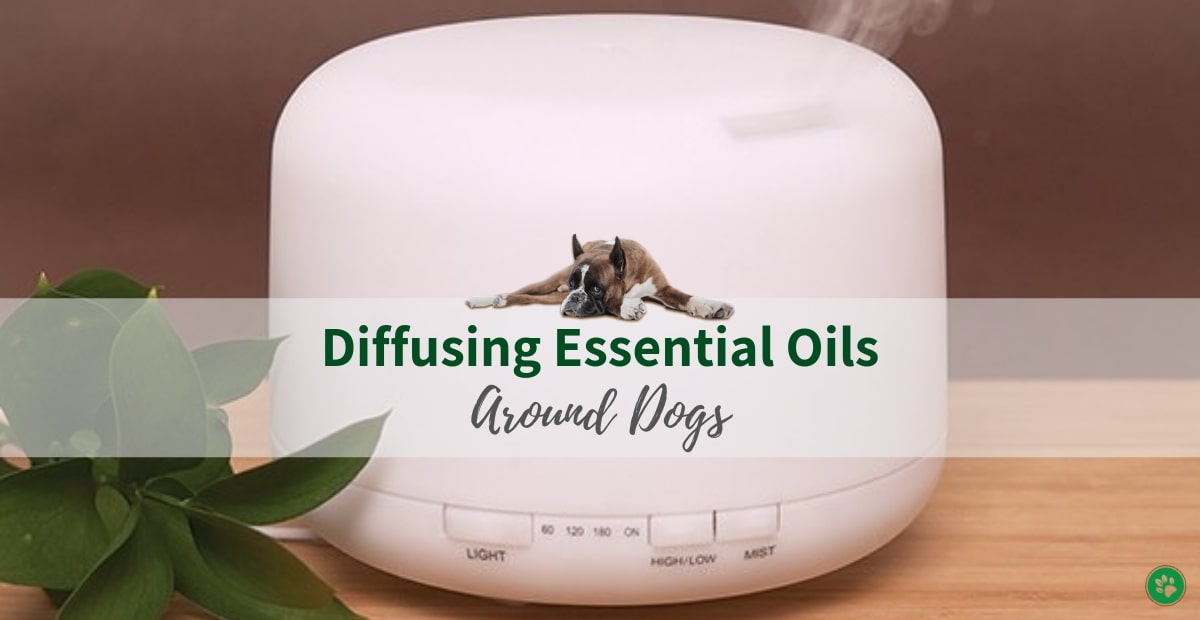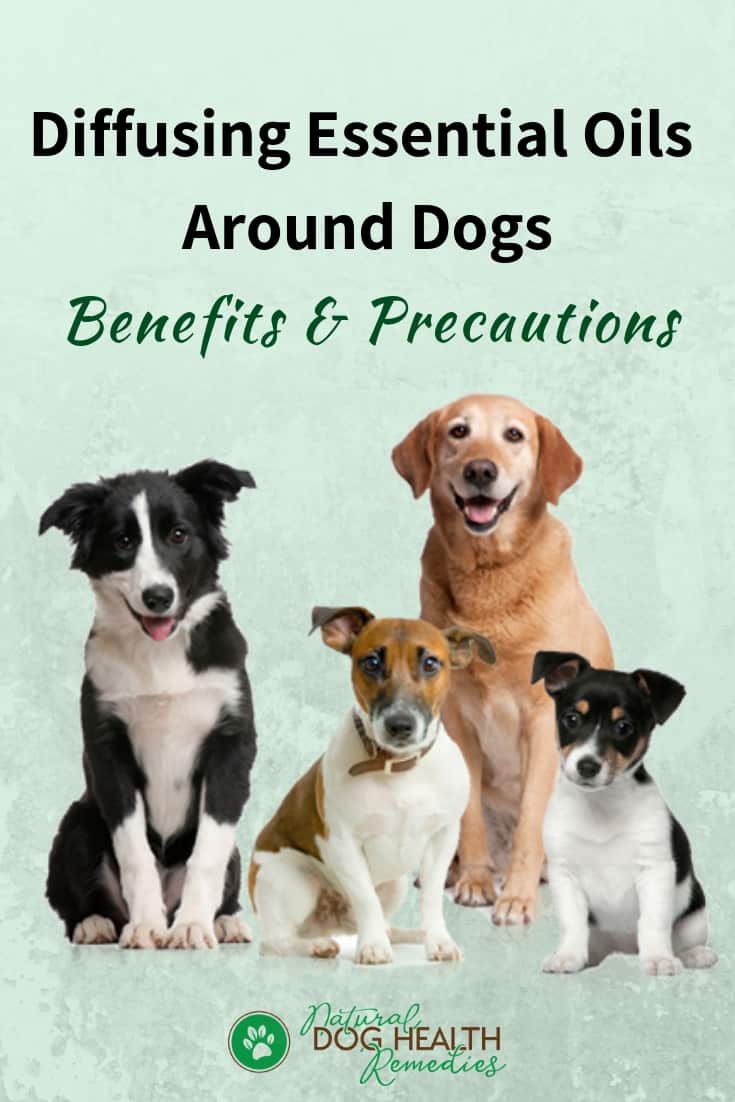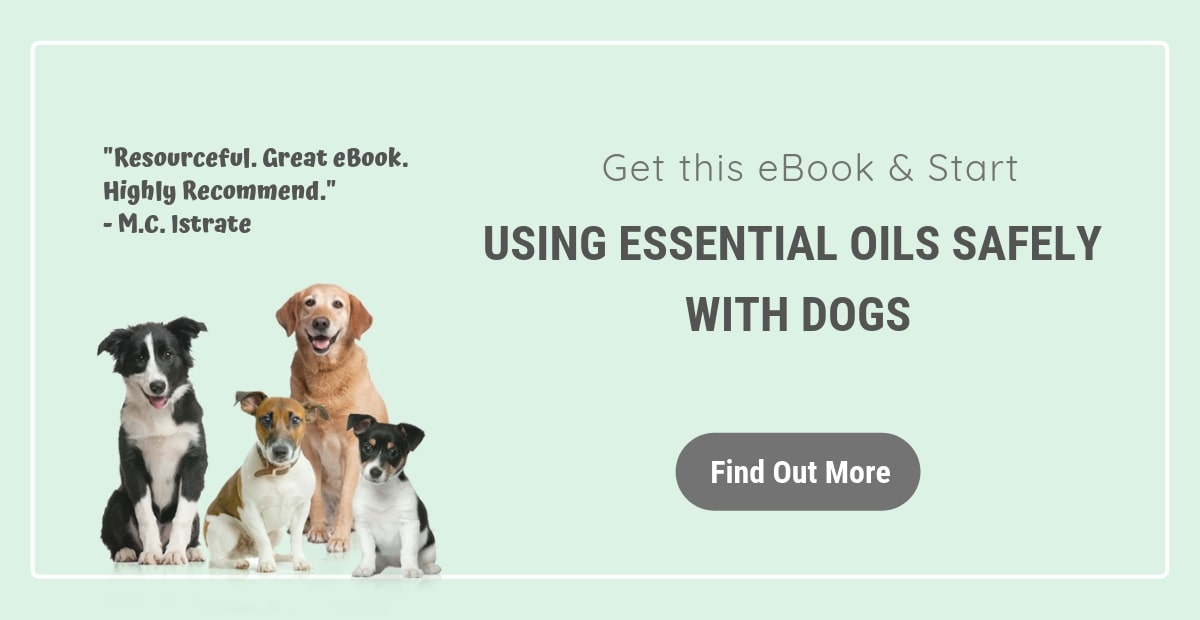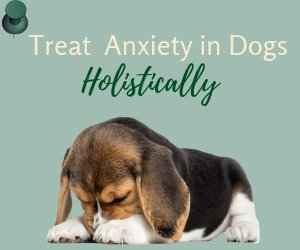Diffusing Essential Oils Safely Around Dogs
(FTC Disclosure: If you make a purchase via a link on this page, I may receive a small commission, at no added cost to you.)

Overview
Are you one of those concerned dog parents who want to diffuse essential oils in your house but are not sure whether it is safe for your dog?
You are not alone!
I got a lot of emails from site visitors voicing the same concern.
This article will hopefully answer some of the most common questions dog parents have regarding diffusing essential oils around dogs.
In particular, I will talk about:
- Benefits of Diffusing Essential Oils
- Safety Precautions When Diffusing Essential Oils Around Dogs
- Tips for Dog Parents on How to Diffuse Oils
- Some Dog Friendly Oils & Their Uses
Benefits of Diffusing Essential Oils
Diffusing oils in a diffuser is a simple, easy, and effective way to disperse essential oil molecules quickly to the environment.
While airborne, these dispersed oil molecules can get inhaled by us and our dogs.
When inhaled, the essential oil molecules go directly into the bloodstream via the blood vessels inside the nasal cavity and the lungs. Also, due to the small size of oil molecules, they can cross the blood brain barrier and pass through to the brain.
Using essential oils with different therapeutic properties, we can use diffusion for various purposes. For example, we can diffuse oils to:
- Protect ourselves and our dogs from bacterial and viral infections
- Clear nasal congestion and soothe upper respiratory issues
- Repel insects such as flies and mosquitoes
- Reduce emotional stress and anxiety
- Help with better sleep
- Improve air quality and remove odors
Safety Precautions When Diffusing Essential Oils Around Dogs
While diffusing oils can benefit not only ourselves but also our dogs, we need to take extra care when using a diffuser around our dogs.
Dogs have more a sensitive sense of smell, and can easily get overwhelmed if the oils are too strong, or are being diffused around the clock.
Here are some safety precautions that we should pay attention to:
- Do not diffuse unsafe oils for dogs. It sounds like a no brainer but some dog parents think that diffusing unsafe oils will not harm their dogs because they are not actually putting the oils on the dog's body! That of course is not true. Unsafe oils can still get inside the dog through inhalation.
- Diffuse only gentle essential oils around dogs. Do not diffuse "hot", spicy and strong oils (e.g. black pepper, ginger, clove, nutmeg, etc.)
- Do not diffuse oils for hours on end. It's not good for both people and dogs. The best way is to diffuse oils for a period of around 30 minutes, and turn it off for at least 30 minutes. Do this several times throughout the day and that should be enough.
- Whenever you are diffusing essential oils, make sure there is some air exchange (e.g. leave the door or window open a bit.)
- Always give your dog a way out. For example, keep the door open so your dog can leave the room if she "has had enough".
- Observe your dog closely especially when you are diffusing new oils for the first time. If your dog shows signs of discomfort or stress (e.g. panting, sneezing repeatedly, pacing, etc.), remove your dog from the room immediately and get her out for some fresh air.
- There are anecdotal reports that inhaling essential oils may trigger asthma attacks in some people. To be safe, assume the same thing may happen to dogs with asthma - avoid diffusing essential oils around your dog if she has a respiratory issue such as asthma.
- Avoid diffusing essential oils around epileptic dogs.
- Some essential oils are not safe for pregnant dogs and should not be diffused around them. In fact, due to the heightened sense of smell in pregnant dogs, I would refrain from diffusing oils altogether around them in order not to overwhelm them.
- Keep diffusers and all essential oils out of the reach of dogs.
Tips for Dog Parents on How to Diffuse Oils
To harness the therapeutic properties of essential oils and at the same time protect our dogs from the risk of over-exposure to the oils through inhalation, here are some useful tips for dog parents when diffusing oils:
"Empty House" DiffusionDuring the peak flu season, or if a family member is suffering from a bacterial or viral infection, you may want to diffuse strong antibacterial and antiviral oils (e.g. tea tree oil) to kill off the airborne germs.
But you hesitate to use tea tree oil or other strong antimicrobial oils as they may not be too safe for your dog!
Here is what you can do. Put the oils in the diffuser and set the timer for 30 minutes. Start the diffuser and take your dog out for a long walk or car ride (at least 60 minutes). When you return, the room should have been “disinfected”, and the oils in the air should have dissipated. At this point, you may want to open the windows for some fresh air to get inside the house.
"Low Stimulation" DiffusionIf your dog is rather sensitive to essential oils but you would like to use some calming oils to help him sleep, for example, one way of doing it is to diffuse the oils in the room for 30 minutes. Then turn off the diffuser and bring your dog inside the room.
The oil molecules in the air can still work on your dog, but since the diffuser is off already, it won't over stimulate your dog.
Single-Oil DiffusionIf your dog has never experienced essential oil diffusion before, or if your dog is "finicky" when it comes to scents, try diffusing just one oil at a time. This way, you can find out easily if an oil is agreeable to your dog or not.
When you can identify several oils that work fine with your dog, you can then make blends using those oils if so preferred.
Some Dog Friendly Oils & Their Uses
 Assuming that your dog is OK with these oils (check with your dog first :), you can use them to make some awesome blends for diffusion.
Assuming that your dog is OK with these oils (check with your dog first :), you can use them to make some awesome blends for diffusion.
If you have a dog who seems stressed, or anxious, or just doesn't seem to be able to calm down and relax, try diffusing some of these dog-friendly oils. They all have a calming and relaxing effect:
- Lavender (Lavandula angustifolia)
- Roman Chamomile (Chamaemelum nobile)
- Geranium (Pelargonium x asperum)
- Bergamot (Citrus bergamia)
- Palmarosa (Cymbopogon martini var. motia)
- Thyme ct. linalol (Thymus vulgaris ct. linalol)
If you have an older dog who cannot sleep well, try diffusing some of these oils for about 30 minutes before bed. Then turn off the diffuser and let your dog into the room to sleep.
If you don't have a diffuser, you can always add some of these oils to a spray bottle of water. Shake and spray the air and the dog's bedding before going to bed.
- Lavender (Lavandula angustifolia)
- Bergamot (Citrus bergamia)
- Roman Chamomile (Chamaemelum nobile)
- Palmarosa (Cymbopogon martini var. motia)
- Sweet Marjoram (Origanum majorana)
These oils can clear the sinuses and have an expectorant effect. They are good for those suffering from allergies, coughing, and sinus congestion.
- Cedarwood (Juniperus virginiana)
- Eucalyptus radiata (Eucalyptus radiata)
- Ravintsara (Cinnamomun camphora ct. 1,8 cineole)
- Laurel leaf (Laurus nobilis)
However, be sure to use Eucalyptus, Ravintsara and Laurel leaf with care and only sparingly. These three oils all contain a component (1,8 cineole) that may actually cause breathing problems in young kids (and perhaps some dogs), if used in high dilution and near the face.
If you have young children and/or small sensitive dogs in the house, it is better to diffuse cedarwood instead (together with a calming oil such as lavender and maybe sweet orange).
Antimicrobial Essential OilsWhile some of these oils may not be "dog-friendly", they all have powerful antibacterial and antiviral properties, and have been found to be effective against the flu virus.
During the flu season, diffuse some of these oils while you and your dog are out for a long walk (as described in the "Empty House" Diffusion section above.)
- Tea Tree (Melaleuca alternifolia)
- Rosemary (Rosmarinus officinalis)
- Eucalyptus radiata (Eucalyptus radiata)
- Sweet Orange (Citrus sinesis)
- Bergamot (Citrus bergamia)
In Summary...
As you can see, we can diffuse essential oils at home even around dogs - if we know how to do it correctly!
As always, only use 100% pure essential oils.
Also, all dogs are individual beings and sometimes even a "dog-friendly" essential oil may cause problems to those who are sensitive to that particular oil. So be sure to observe your dog closely when using any essential oils on or around your dog.
 References
References
Tisserand, R. & Young, R. Essential Oil Safety: A Guide for Health Care Professionals (Elsevier Canada, 2013).
Essential Oils to Prevent the Spread of Flu, Dr. Shannon Becker, Tisserand Institute.





